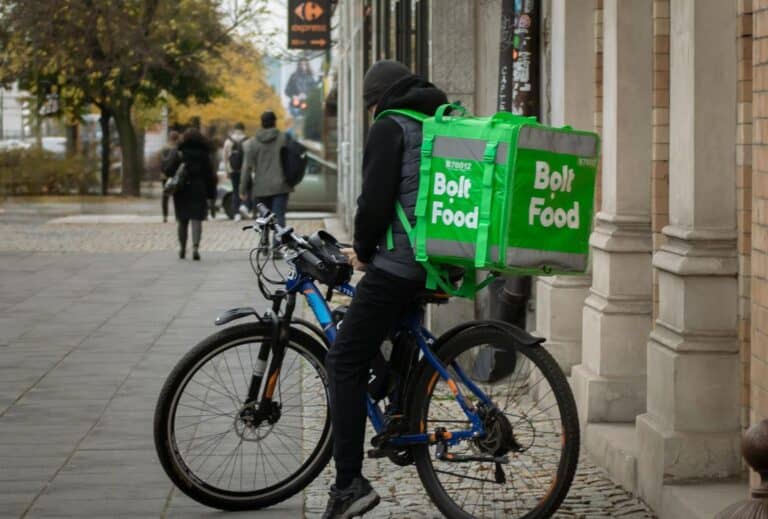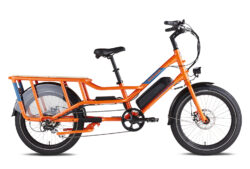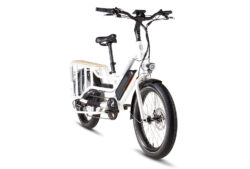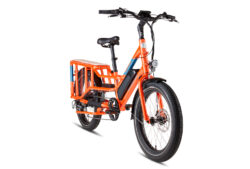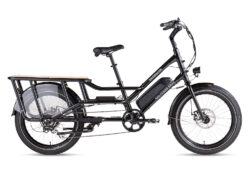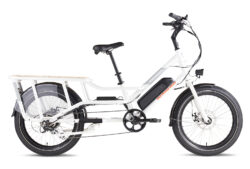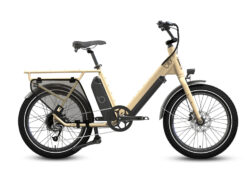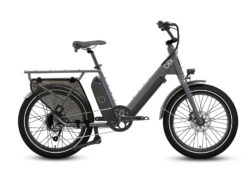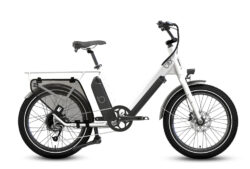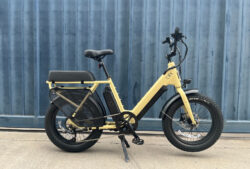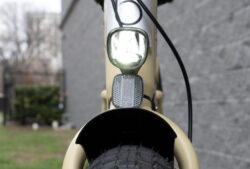Drumroll, please. The global e-bike market is poised to grow by nearly 10% between 2022 and 2030. In fact, our 2023 eBikes.org report found that there will be about 77.2 million e-bikes worldwide by about 2030.
There are many reasons behind the push for e-bikes — and EVs in general. They’re sustainable, efficient, and easy to maintain, making them the perfect solution for the rideshare and delivery industry.
That’s why companies are already relying more heavily on electric-powered vehicles than traditional transportation forms. Choosing EVs — particularly e-bikes — over carbon-emitting vehicles will likely lead to some significant changes in the rideshare and delivery world.
And we’re here to give you the latest data-driven updates.
The Transition to Electric Vehicles in Every Sector
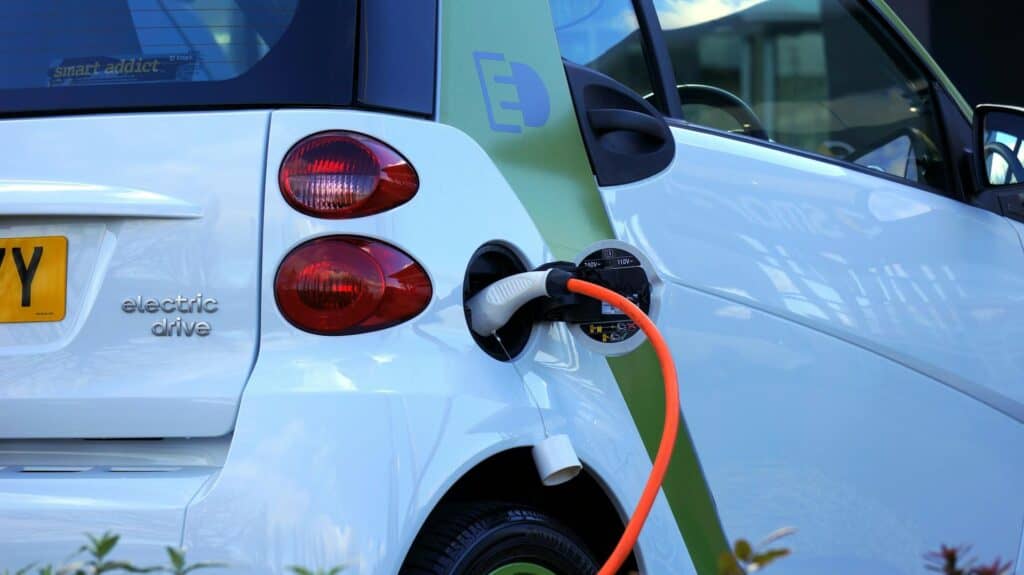
There’s no way around it: EVs are on the rise everywhere. According to our 2023 survey, 15% of the U.S. population already owns at least one e-bike, and 17% of city dwellers plan to buy an e-bike within the year. We also found that the EV market in general — mostly cars and trucks — sold about 14 million units that same year.
Now, these aren’t just individuals buying EVs. Many companies across a wide variety of industries are switching to EVs to reduce costs and improve sustainability.
For example, AT&T surpassed its 2020 goal and reduced its U.S. ground fleet emissions by over 38%, in part by switching to primarily hybrid passenger sedans. Comcast is also piloting electric and hybrid vehicles for its fleet. Even Heathrow Airport is getting into the EV game with up to 200 electric I-Pace Jaguars for chauffeuring around passengers.
But what about the rideshare and delivery industry?
E-Bikes for Deliveries: A Perfect Solution
There’s a reason more people (and companies) are turning to e-bikes for their transportation needs. They provide a perfect balance of eco-friendliness and efficiency — exactly what the delivery industry needs.
Cost Savings
According to 2021 data, the average delivery truck in the United States uses approximately 1,765 gasoline gallon equivalents annually. Light trucks and vans (like the ones you might see Amazon use) use an average of 636 gasoline gallon equivalents.
The 2021 average gasoline price was USD 3.10 per gallon. That means operating one delivery truck in ’21 cost around USD 5,470 in fuel alone, while light trucks and vans paid about USD 1,970 in fuel expenses.
In subsequent years, the average gas price has only increased, with the 2023 average reaching USD 3.63 per gallon. That bumps yearly delivery vehicle costs up by about another USD 1,000.
EVs, on the flip side, calculate their electricity in eGallons instead of gallons. As of January 2024, the national average cost is USD 1.41 per eGallon, making EVs more than two times cheaper to operate than gas-powered vehicles.
Eco-Friendliness
While cost is a pretty persuasive factor for most businesses, it’s also essential to consider environmental impacts.
Research from the U.S. Environmental Protection Agency shows that EVs produce lower levels of greenhouse gases than an average new gasoline car — even with power plant emissions. In fact, electricity often comes from renewable energy sources like wind or solar power, which can reduce environmental impact even further.
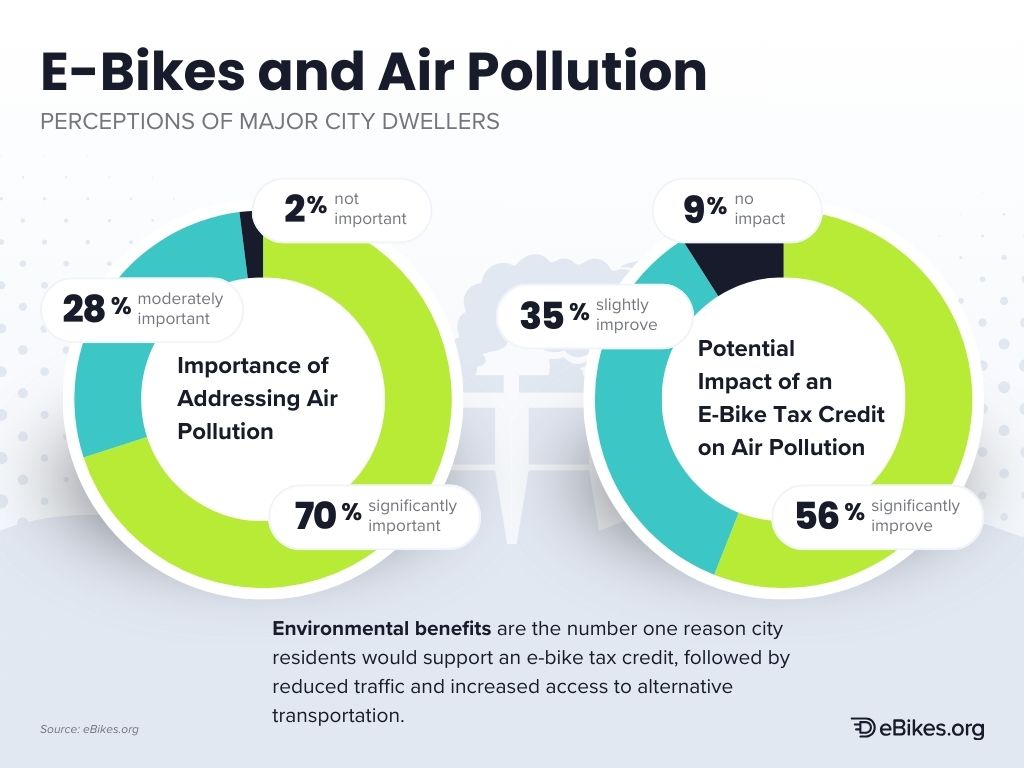
With lower emissions comes better air quality — something our 2023 eBikes.org survey found that’s significantly important to 70% of city dwellers. Another study even linked higher rates of EV usage to improved air quality.
Now, imagine the impact of most delivery and rideshare companies switching to electric vehicles.
Ease of Use
Driving an EV is just like driving any other car. But handling an e-bike is not like riding a traditional bike; it’s easier.
With a traditional bike, you have to rely solely on your own strength to get the bike going and maintain speed. An e-bike takes that challenge away by giving you a motorized boost while you pedal. This removes the hassle of stopping and starting in traffic and minimizes the challenge of traveling up hills — especially in infamous cities like San Francisco.
The motor also makes carrying cargo far easier. Delivery drivers can tote around heavy packages and bags without feeling weighed down. They can keep delivering all day — and making more money — without needing a long break to rest.
Also, because e-bikes typically top out at 20 or 28 mph, they usually don’t require a special license to drive (make sure to check your local laws, though!). That’s one of the key differences between e-bikes and another standard delivery vehicle: motorcycles.
E-Bikes in the Delivery and Rideshare Space
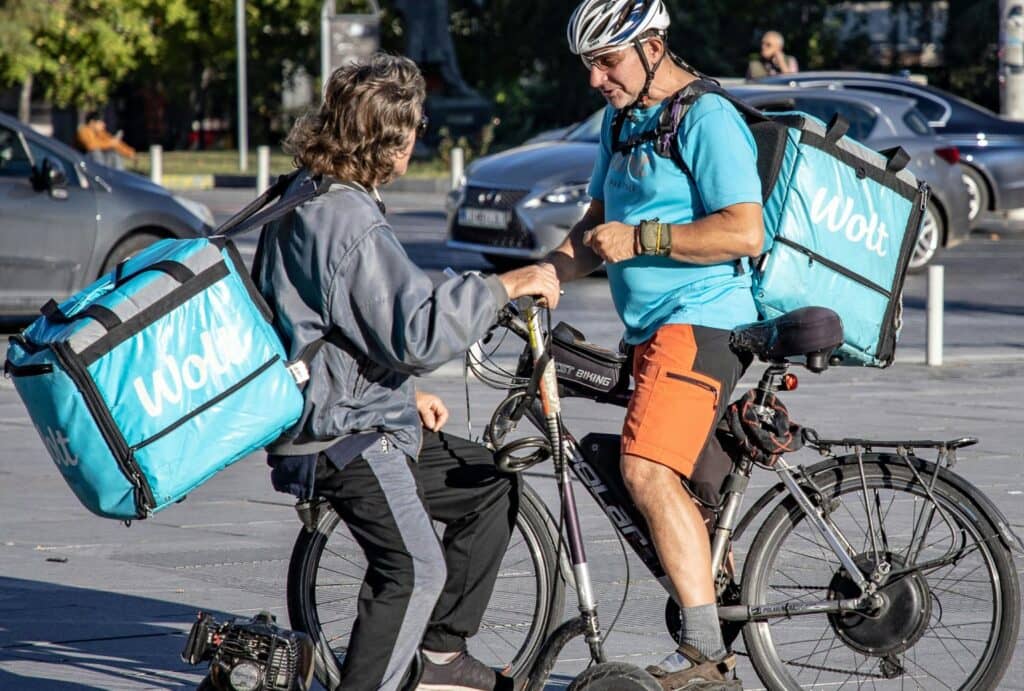
Now, just how are delivery and rideshare companies transitioning to e-bikes? Here’s a closer look at how some companies are leading the way.
Amazon
As of 2024, Amazon uses cargo e-bikes in over 40 European cities. It has also pledged a € 1 billion investment to double the size of its European zero-emissions fleet. The goal is to eventually have 10,000 electric delivery vans and 1,500 electric heavy goods vehicles.
Amazon also has some cargo e-bikes in the United States. In densely populated areas like the Manhattan borough of New York City, Amazon uses cargo e-bikes to complete most Amazon Fresh and Whole Foods deliveries in densely populated areas like the Manhattan borough of New York City. It also has plans to test a cargo e-bike package delivery program in Brooklyn.
Lyft
Lyft is traditionally known for its rideshare service, but it’s also breaking into the bikeshare world with its Bay Wheels program. This initiative provides rentable e-bikes across the Bay Area in California.
So far, there are e-bike hubs in Berkley, Emeryville, Oakland, San Jose, and San Francisco. Though the program is still in the implementation stage, Lyft will eventually offer 2,700 new e-bikes that consumers can rent for as low as USD 0.15 per minute with a Bay Wheels pass.
Uber and Uber Eats
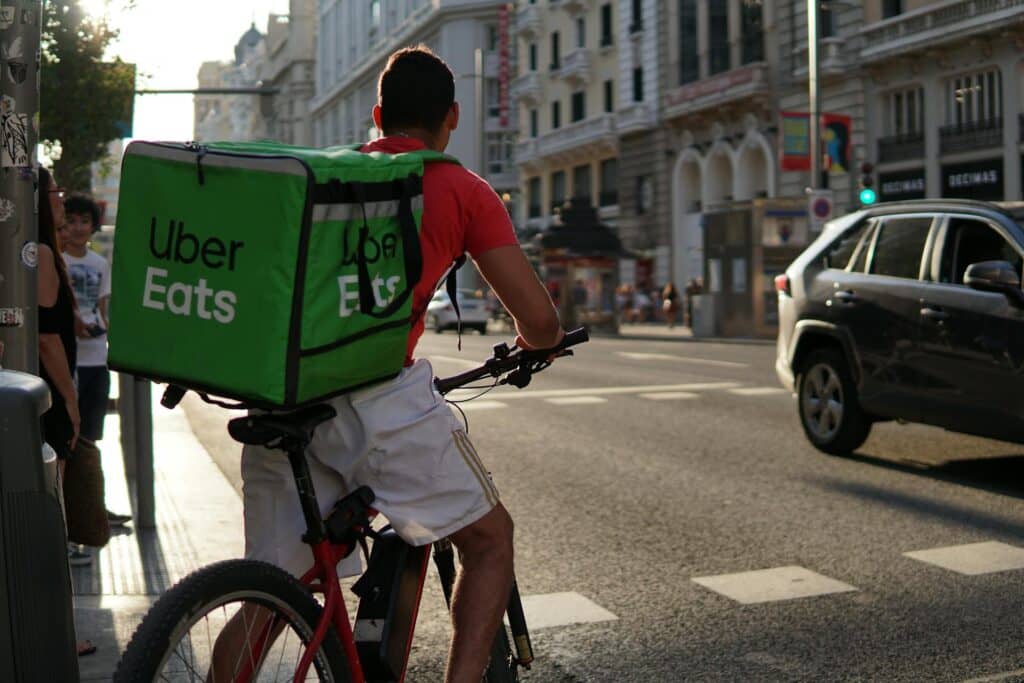
Uber operates a similar e-bike rental service. Using its app, you can find e-bikes near you and reserve them for a specific time. Uber also owns Lime, a separate e-bike and e-scooter rental company that plans to add over 30,000 new e-bikes in locations across North America, Europe, and Australia.
In Australia, Uber Eats allows e-bikes for deliveries in certain urban areas. If you don’t have your own e-bike, the company partners with Jot Bikes and Zoomo to give you discounted rentals for each shift.
UPS
UPS began its e-bike pilot in Hamburg in 2012. As of 2022, it has expanded e-bike deliveries to 30 other major cities, including London, New York, and Paris. It estimates that switching to e-cargo bikes in Hamburg alone saved 57 tons of CO2 annually.
In 2022, UPS also began testing four-wheeled electric bikes in seven European markets as well as specific U.S. and Asian locations.
City Rideshare Programs

Many cities operate their own e-bike rideshare programs on a smaller scale. One of the most well-known is Citi Bike in New York City, which has over 4,000 Lyft e-bikes and charging hubs all over the city. Chicago has a similar system, also powered by Lyft, called Divvy.
However, it’s not just major cities that are getting into the e-bike game. Pittsburgh has a bikeshare program called POGOH with 600 bikes and 60 stations, and Syracuse offers a 1,000-vehicle micromobility program.
Challenges Facing E-Bike Deliveries
While e-bikes are a great solution for delivery services, they’re not perfect. Here are some of the challenges companies might face when adopting e-bikes for deliveries — and how they can overcome them.
Theft
E-bikes are generally more expensive than traditional bikes, which makes them more appealing to thieves. Leaving an e-bike unattended on the street to make a delivery gives thieves a prime window to strike.
To counteract this, e-bike manufacturers are devising security features to keep bikes safe. For example, the Specialized Turbo Como comes with a system lock that disables the motor without your personalized pin. If you still feel unsafe, you can lock the battery in place or remove it entirely.
Infrastructure

Unfortunately, many cities simply lack safe and viable infrastructure for biking. Riding in traffic can be hazardous, and most bicycle accidents happen on major streets without bike lanes.
Luckily, our 2023 report highlighted some cities that are working on this. In the U.S., places like Dallas are updating bike infrastructure plans to create safer routes. Additionally, 10 global cities have also been awarded grants from the Bloomberg Initiative for Cycling Infrastructure to redesign cycling infrastructure.
Safety
E-bikes can travel much faster than traditional bikes, which creates additional safety risks. Even a small crash could have more disastrous consequences when traveling at higher speeds and wearing minimal protection.
While most cities have laws about wearing a helmet when riding a bike, riders might choose to ignore this advice — especially if they’re in a hurry to make deliveries.
Furthermore, e-bikes can also be more dangerous to pedestrians. Pedestrians might see a bike and assume they have time to cross the street — when, in reality, the bike is traveling much faster than they realize.
The good news is that most of these safety concerns are mitigated when you follow safe bike commuting tips. For example, planning your route ahead of time, following the rules of the road, and wearing proper safety gear can all help keep you safer.
E-Bike Quality
E-bikes have made plenty of headlines for their supposed battery safety risks. The growing number of lithium-ion battery fires could deter some delivery companies and individuals from embracing EVs.

However, the issue isn’t the e-bikes but the battery storage and quality. Most e-bikes are safe, and as long as you choose a model from a reputable brand, you shouldn’t have anything to worry about. It’s still always important to find a bike with quality components and official UL 2849 certification — the standard for electric bike systems.
Top Cargo E-Bikes
Certain e-bike models are better for delivery services than others. In particular, cargo e-bikes have more storage availability and higher payload capacities, making them ideal for toting around heavy or oversized packages — or another passenger. Two of our favorites for delivery drivers are the RadWagon 4 and the Tern GSD S10.
RadWagon 4

RadWagon 4
The RadWagon 4 has a 45 mi range, which should be more than enough for zooming around for a few hours of deliveries. And if that isn’t enough, the battery is easily swappable, so you can simply switch it out for a fully charged one to keep on going.
Its impressive 350 lb payload means you can tote around heavy packages without bottoming out the bike. Plus, it’s relatively affordable, at just under USD 1,800.
Blix Dubbel
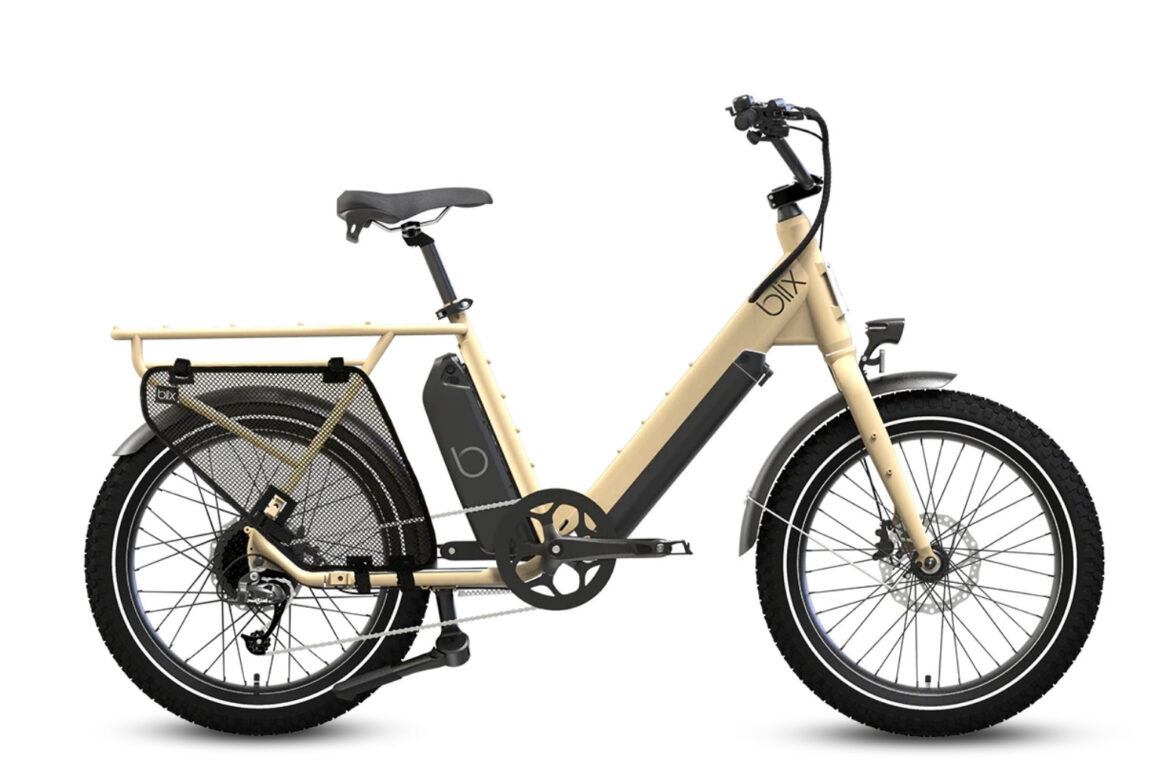
Blix Dubbel
Riders with a full day of deliveries ahead of them can’t beat the Dubbel from Blix. The dual-battery version offers a 70 mi range, providing more than enough juice to make it through a full shift.
The frame-integrated rack can hold up to 150 lbs, which is likely enough to carry groceries and food deliveries. It has a top speed of 28 mph, so your hot food deliveries still arrive hot. Blix also offers numerous racks, baskets, and frame bags to customize the Dubbel to fit your needs.
E-Bikes as Delivery Vehicles Set to Grow
As the e-bike industry continues to grow, there’s no doubt we’ll see increased EV presence in the delivery and rideshare market. Whether you’re on the delivery or receiving side, it’s great news all around.
Delivery drivers can enjoy faster trips than on a regular bicycle and far less fuel costs than driving a car. Consumers can also take advantage of quicker deliveries by workers who aren’t bogged down by rush hour or unexpected traffic jams.
Enjoy the insights we covered here? Subscribe to our newsletter for more e-bike news delivered right to your inbox.
